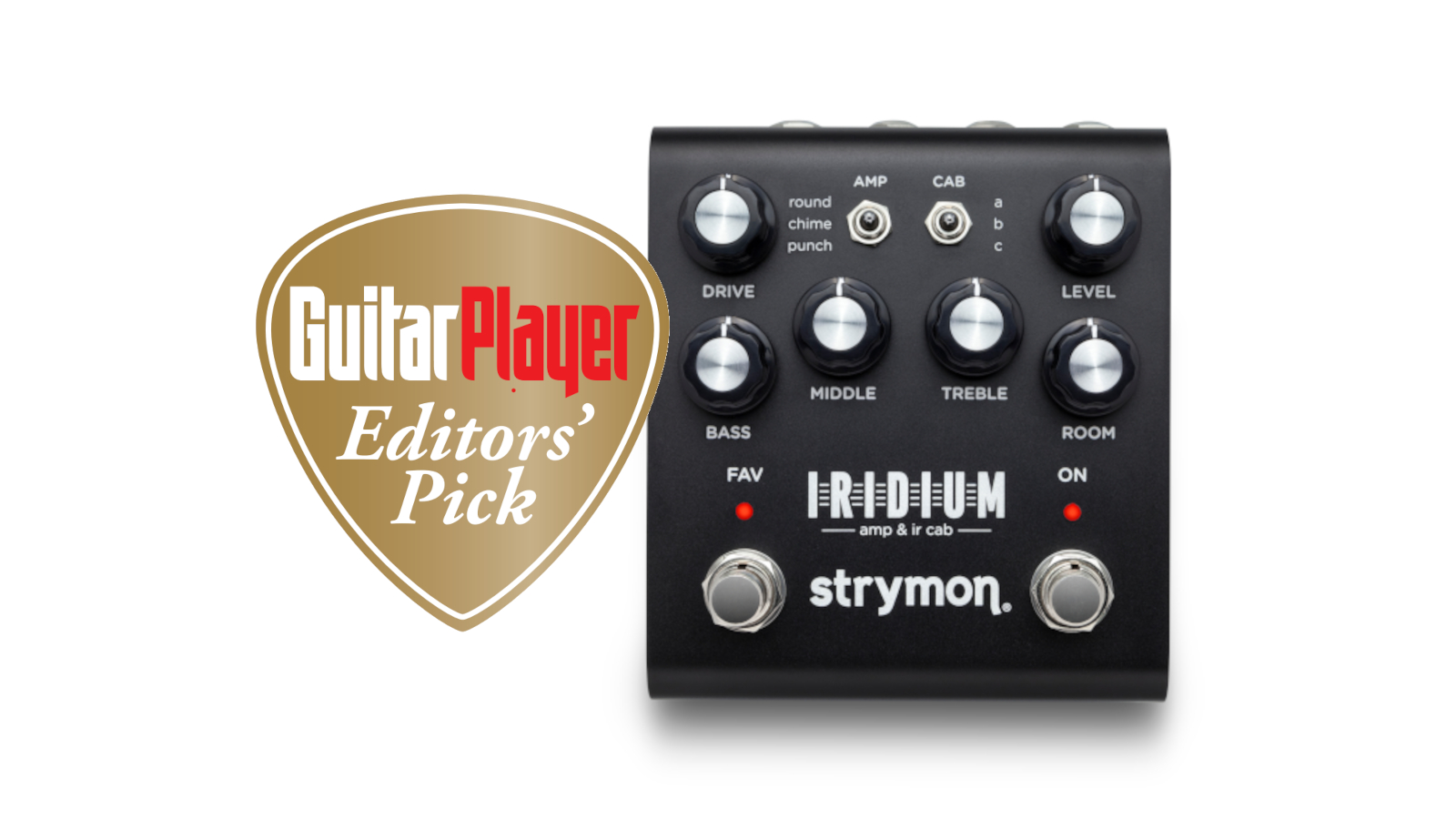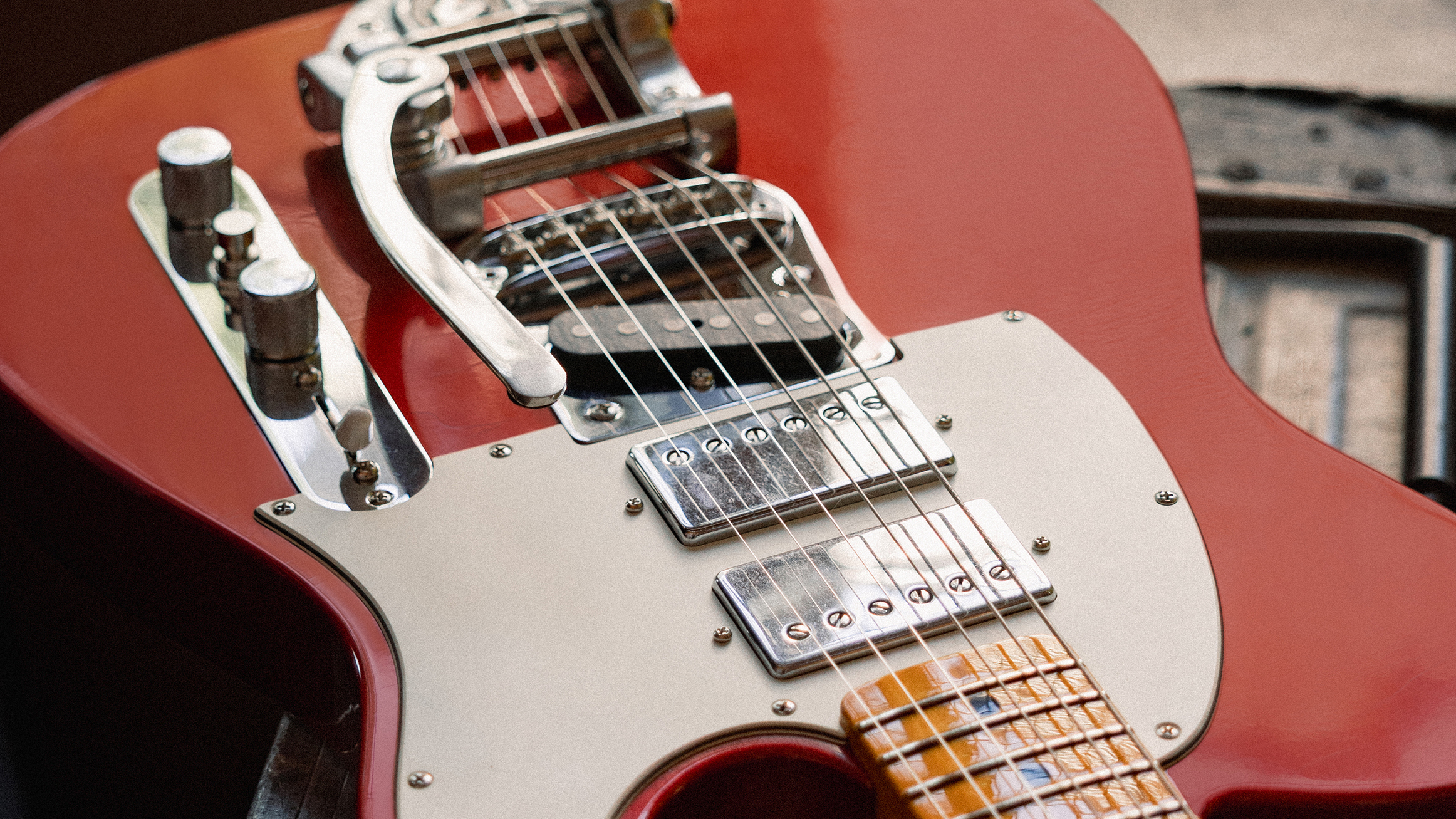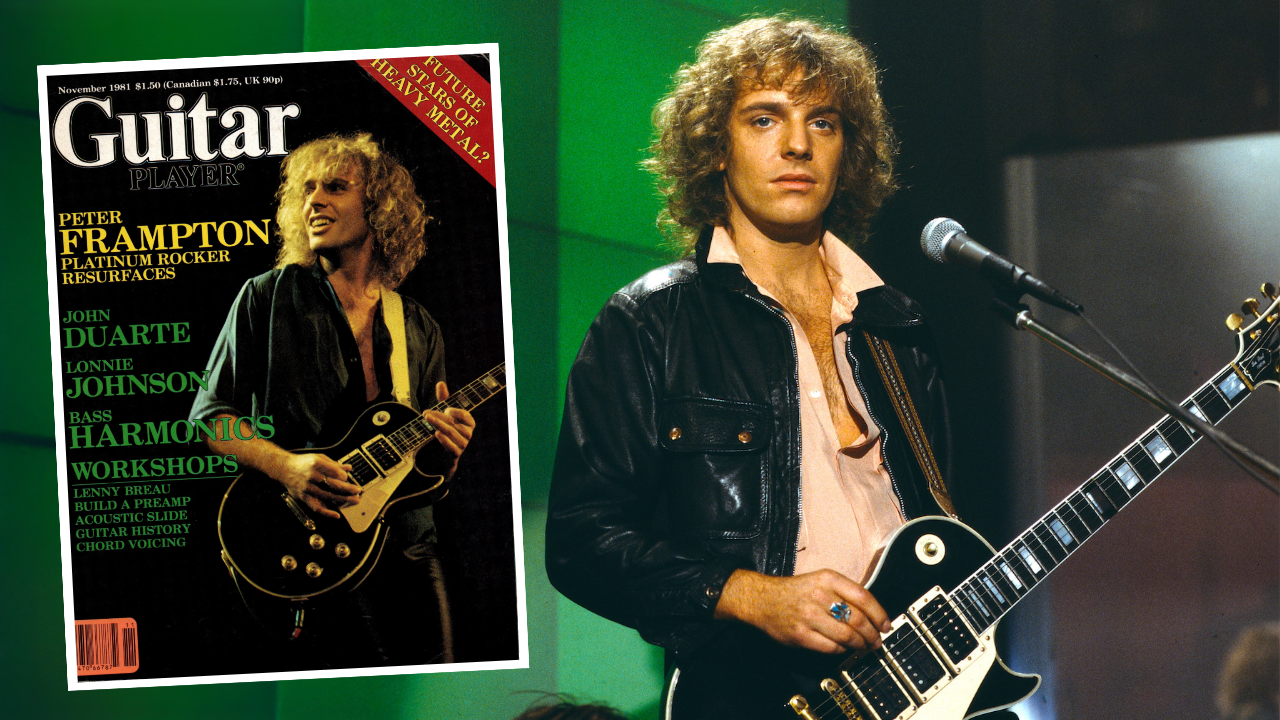GuitarPlayer Verdict
Its cornerstone sounds and easy functionality are themselves enough to warrant an enthusiastic reception on the market, and an Editors’ Pick Award
Pros
- +
Three good-sounding amp emulations lay the foundation for a truly impressive bundle of functionality in a very compact package
Cons
- -
Some users might miss XLR outs and/or an FX loop, although these would likely require a bigger and pricier package
You can trust Guitar Player.
Given the company’s success in the effects pedal market, it might have come as a surprise when Strymon announced its entry into amp modelers and IR cabs with the Iridium.
Then again, the California pedal maker’s know-how with premium DSP could be as easily applied to the virtual backline as to the complex reverb, delay and modulation pedals with which it’s made its name, and which the folks at Strymon clearly hope you’ll partner up with this handy, compact, fly-rig-capable pedal.
To fit such an impressive feature set in this compact pedal enclosure, Strymon made several of the tone-shaping decisions for you. Only three amp choices are included, but they’re classics: Round, modeled on the Fender Deluxe Reverb; Chime, based on the Brilliant channel of a Vox AC30 Top Boost; and Punch, based on a Marshall “Plexi” Super Lead.
Each amp shares the same controls for drive, bass, middle, treble and level, plus a room control that dials in reverb of three selectable sizes (not intended to replace outboard reverbs). However, with this model, the EQ responds like the tone stack of its respective amp.
As such, the middle does its thing in traditional fashion on the Plexi model, but it becomes a bonus control on the originally mid-less Deluxe Reverb, and an output-stage treble-cut control on the AC30.
As per most things Strymon, many of the controls on the simple interface do double or triple duty. Cab bypass, amp bypass and input level are accessible via the drive control. The level control also accesses level trim, power-up modes and five options for expression connection modes. Meanwhile, the room knob taps small, medium and large room options, all of which is selected and saved by pressing and holding a combination of foot switches.
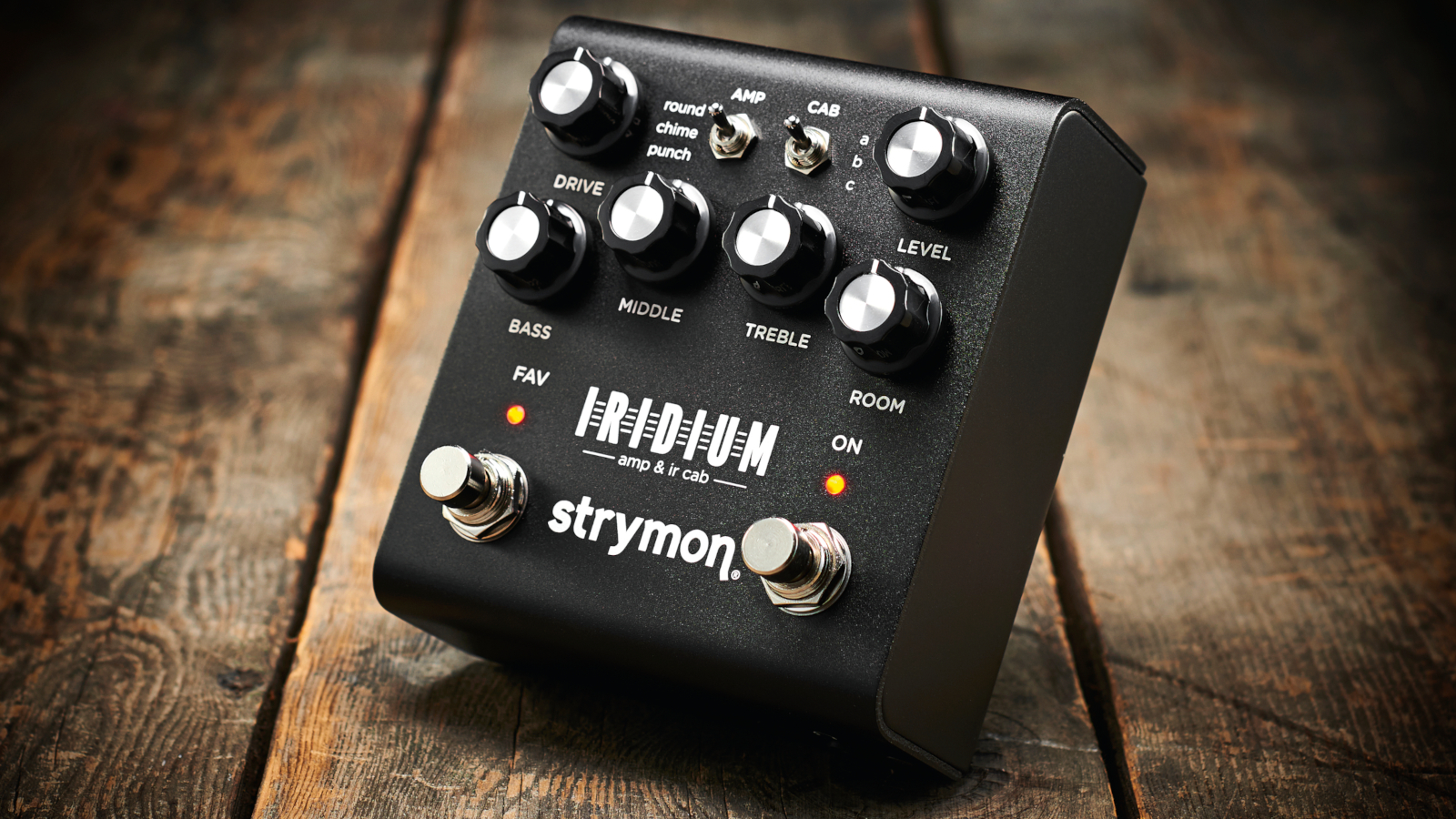
Strymon’s main intention with the Iridium is pedalboard integration.
While you can generate some old-school lead tones from each amp model when desired, Iridium isn’t focused on providing channel-switching-like clean/crunch/lead options (although it’s somewhat achievable by means of the user preset Fav switch, via the four presets accessible with a Strymon MultiSwitch, or through the 300 presets available with full MIDI implementation).
Rather, consider your pre-Iridium drive pedals the gain shapers, as so many guitarists do these days anyway, and the Iridium itself the box that injects realistic amp tone into the chain.
To that end, the pedal carries no onboard effects – other than the eponymous room control – but that is once again in keeping with its intention. Your wet atmospherics of choice should all function perfectly well chained up after Iridium, while traditional pre-amplifier modulation pedals can even be run into the unit in stereo thanks to the TRS input’s dual mono/stereo capabilities.
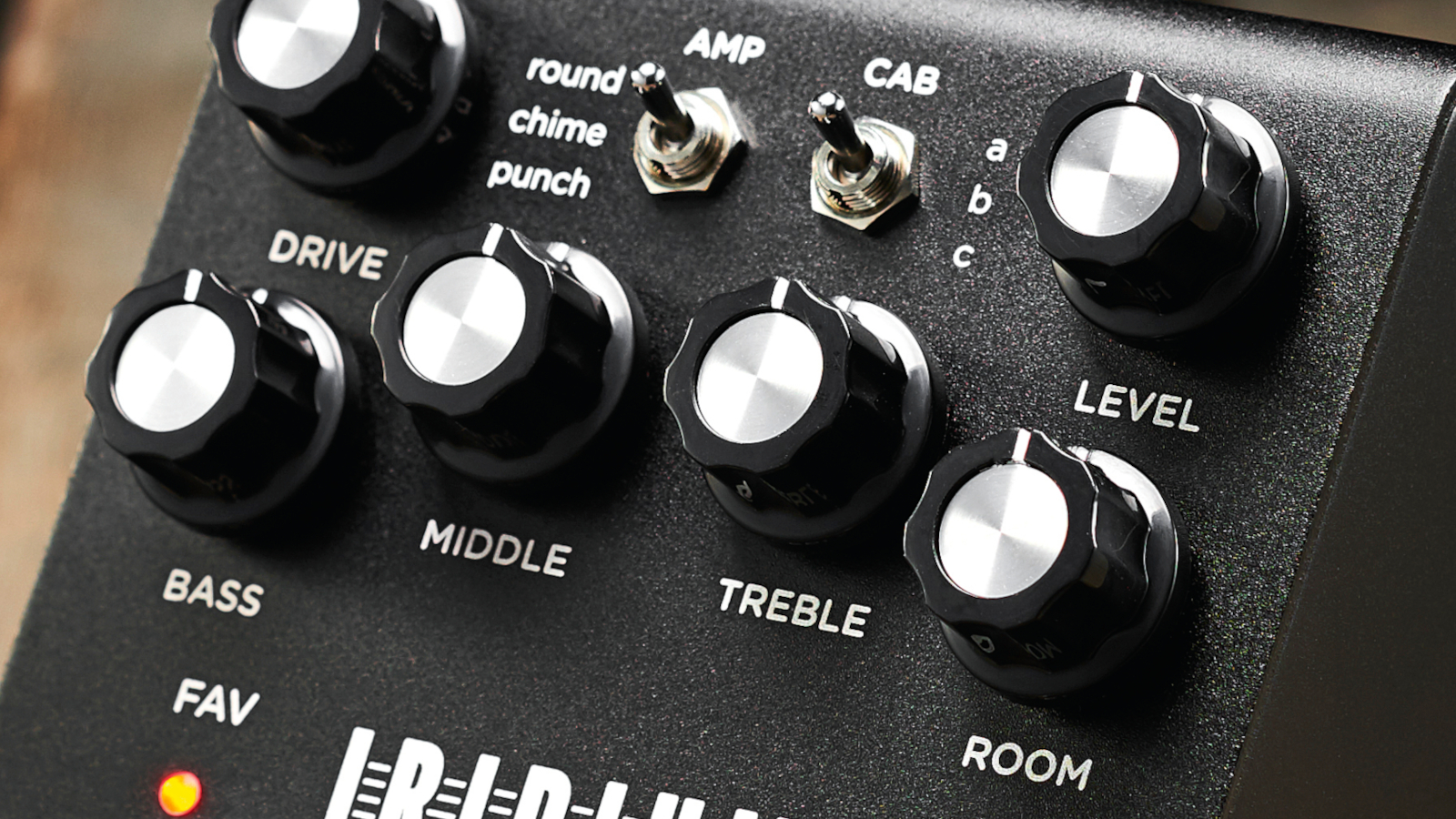
The aforementioned amp models are achieved in familiarly impressive Strymon fashion using in-house Matrix Modeling and powered by a high-performance 32-bit floating-point SHARC ADSP processor, while a hybrid IR/algorithmic processor delivers the studio-reverb-like room sound.
The cab sims are delivered by the hi-res 24-bit/96kHz/ 500ms stereo IRs, which equates to unusually powerful stuff in a box this size.
Three IRs are available per amp, factory loaded to deliver a Deluxe Reverb 1x12, Blues Junior 1x12 and Vibrolux 2x10 for the Round model; an AC30 2x12 Alnico by popular third-party IR producer OwnHammer, 1x12 Alnico by Celestion, and Mesa 4x12 by Valhiller for Chime; and a GNR 4x12 by OwnHammer, 1x12 Vintage 30 by Celestion, and 8x12 Marshall by CabIR for Punch.
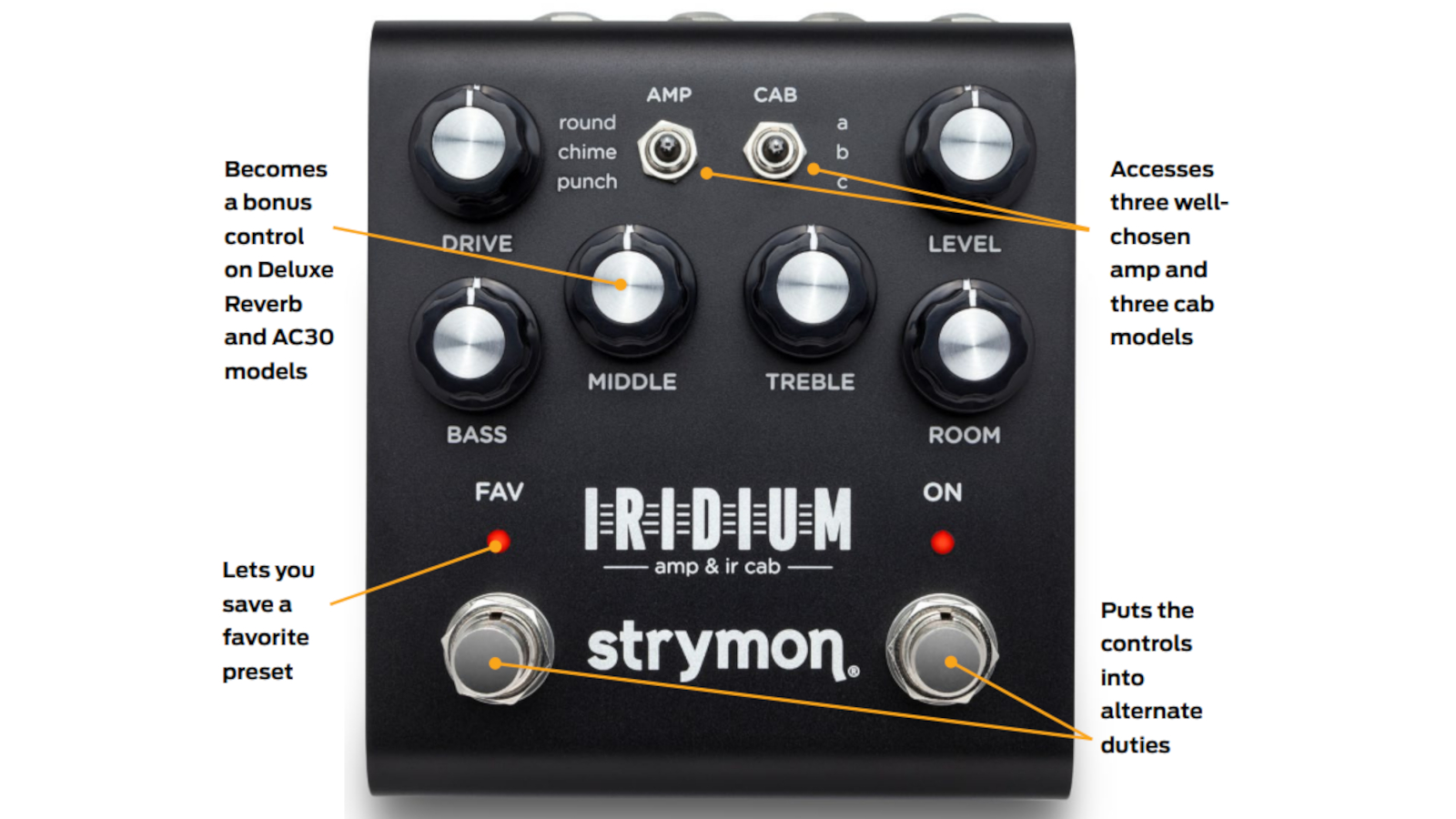
And that’s only the beginning. Strymon includes a broad selection of alternative IRs for use with the pedal, and you can load in any compatible third-party IRs or those you make yourself using Strymon’s Impulse Manager Software via the USB connection.
Although there’s little space here to fully describe its massive capabilities, that Impulse Manager software is an enormous tone-tweaking tool, and using it simply to EQ each IR to suit your sound and playing style can make a tremendous difference to the results.
Some may wish the Iridium had a pair of XLR outs, but that would force a bypass of any post-Iridium reverbs and delays, unless a stereo loop was also added, all of which would necessitate a larger enclosure. No doubt Strymon weighed the options and decided to strike a happy medium.
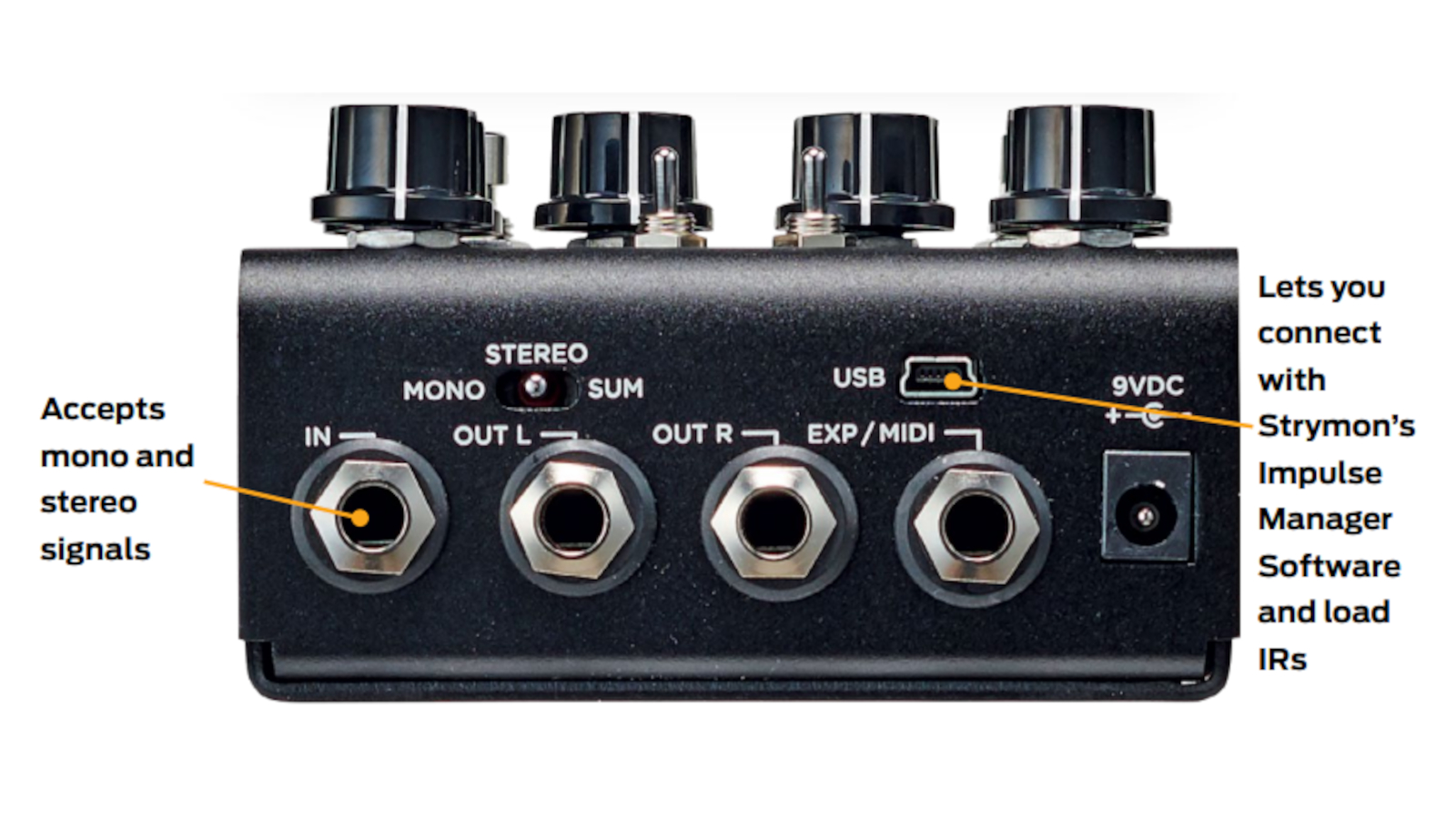
We tested Iridium with a variety of electric guitars, with pedals before and after the unit (as appropriate), into studio monitors, headphones (which also eliminates any post-Iridium effects) and a Tech 21 Power Engine Deuce Deluxe for traditional backline use.
Overall, We found an awful lot to like about this small box of wonders. First and foremost, the three amp models sounded enjoyably realistic, proving an excellent foundation for anything that the majority of pedal-centric rigs is likely to need to create.
Touch sensitivity and the segue from clean to clipping works well in all three, though perhaps a little more smoothly in the Chime and Punch models, which is how you’d find these amps in real life.
The Round model sounds “like” a Deluxe Reverb, although to our ears perhaps more an average Deluxe Reverb reissue than an exemplary vintage combo. That works for thousands of guitarists every weekend anyway, and it provides plenty of familiar voices and a usable clean template.
The Iridium felt and sounded great into the Tech 21 (a powered 1x12 semi-FRFR cab) for traditional back-line-style “in the room” playing.
As with so many of the more advanced modelers these days, it really shone through the studio monitors and headphones, where its rendition of a studio-processed amplifier made total sonic sense.
As such, it consistently delivered tones that were fully ready to be laid down in the DAW, or pumped to the FOH system for an uncompromised live experience.
While none of the three amp models is intended to offer contemporary high-gain performance, Punch in particular will get close with drive dimed and level adjusted to taste, but again, that’s where your pedals come in.
Overdrive applied to the front end by a Wampler Tumnus Plus, an Ibanez TS9 and a JHS Angry Charlie yielded the same results we’d expect from genuine tube amps of these types, and again showed how seamlessly a compact rig like this can come together.
Room proved useful and realistic, and the Iridium integrated well with post-output reverbs and delays.
Finally, we found the nine factory cab IRs all toneful and worthwhile, and also had no trouble loading in a few personal favorites, with great results.
Despite its size and simple control interface, this box will do a lot more than can be fully covered in this space. Yet its cornerstone sounds and easy functionality are themselves enough to warrant an enthusiastic reception on the market, and an Editors’ Pick Award.
Specifications:
- CONTROLS: Drive, bass, middle, treble, room, level. Toggle for Amp round/chime/punch and Cab a/b/c. Foot switches for on/off and Fav. Back-panel switch for mono/stereo/sum.
- CONNECTIVITY: In (stereo-capable via TRS), Out L, Out R, Exp/MIDI, USB, 1/8” stereo headphone output, 9VDC power input
- EXTRAS: Pre-loaded with nine hi-res stereo cab IRs (three per amp type) and will take third-party loading via Strymon Impulse Manager software; compatible with Strymon MultiSwitch Plus for selecting four presets; MIDI control capable (enabling 300 presets)
- SIZE: 4” x 4.5” x 1.75” (excluding feet and knobs)
- BUILT: Assembled in USA
Dave Hunter is a writer and consulting editor for Guitar Player magazine. His prolific output as author includes Fender 75 Years, The Guitar Amp Handbook, The British Amp Invasion, Ultimate Star Guitars, Guitar Effects Pedals, The Guitar Pickup Handbook, The Fender Telecaster and several other titles. Hunter is a former editor of The Guitar Magazine (UK), and a contributor to Vintage Guitar, Premier Guitar, The Connoisseur and other publications. A contributing essayist to the United States Library of Congress National Recording Preservation Board’s Permanent Archive, he lives in Kittery, ME, with his wife and their two children and fronts the bands A Different Engine and The Stereo Field.
"The only thing missing is the noise from the tape loop." We review the Strymon EC-1 Single Head dTape Echo, a convincing take on a very special vintage tube Echoplex
"BigSky MX will be replacing the BigSky as my go-to reverb pedal. I’ve heard nothing that covers all the bases with such pristine and detailed audio quality." We crowned the Strymon BigSky MX the champ of multi-reverb pedals
